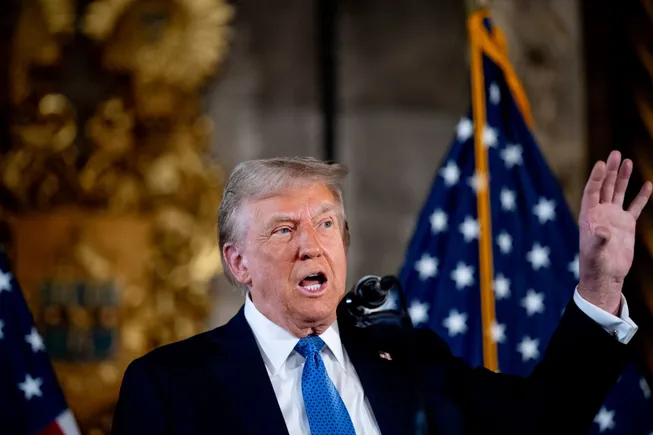The United States is set to impose an additional 50% tariff on China starting Wednesday if China does not withdraw its plans for a 34% retaliatory duty, as announced by President Donald Trump in a post on Truth Social on Monday. This move comes in response to China’s decision to impose new tariffs on U.S. imports, which are scheduled to take effect on Thursday. The escalating trade conflict between the two nations has led to a series of tit-for-tat tariff announcements, with Trump implementing 34% tariffs against China last week as part of a reciprocal trade strategy.
In his post, Trump also stated that all talks with China regarding their requested meetings will be terminated, and negotiations with other countries that have also requested meetings will commence immediately. He issued a warning that any country retaliating against the U.S. with additional tariffs will face new and significantly higher duties than those initially set by his administration. Specific tariffs targeting nearly 60 U.S. trading partners, including China, the European Union, and Japan, will come into effect on Wednesday, following the implementation of a 10% universal baseline duty on Saturday.
The trade relationship between the U.S. and China has been under intense scrutiny during the Trump administration. A recent trade policy review concluded that China has failed to uphold its end of a 2020 trade agreement between the two countries. China, on the other hand, has imposed tariffs this year on various U.S. agricultural products and specific imports such as cars, equipment, and energy. Additionally, China has implemented export controls on 16 U.S. entities and placed 11 U.S. companies on its “Unreliable Entity List” in response to previous actions by the Trump administration.
The ongoing trade tensions between the U.S. and China have raised concerns about the impact on global supply chains and economies. Businesses operating in these markets are closely monitoring the situation and preparing for potential disruptions to their operations. The uncertainty surrounding trade policies and tariffs underscores the need for companies to have robust risk management strategies in place to navigate the evolving trade landscape.
As the situation continues to develop, it is essential for businesses to stay informed about the latest updates and developments in U.S.-China trade relations. Proactive engagement with stakeholders and government officials can help companies mitigate risks and identify opportunities in the changing trade environment. By staying vigilant and adaptable, businesses can position themselves to navigate the challenges and opportunities presented by the evolving trade dynamics between the world’s two largest economies.




